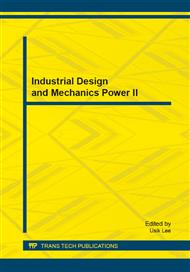p.775
p.779
p.783
p.787
p.793
p.798
p.803
p.807
p.811
Hierarchical Map Building Based UKF-SLAM Approach for AUV
Abstract:
A layered simultaneous localization and mapping (SLAM) approach for building hierarchical maps is proposed in situations that obstacles, environmental sensors and Autonomous Underwater Vehicle (AUV) poses are all unknown in large-scale environments. Firstly, a two-layered environment model is established, which is composed to a submap layer and a topological node layer. Then the perception information of the environmental sensors is employed to assist the online creation and update of submaps local coordinate framework. While building the topological structure, the coupling summation equation is utilized to compute the relative positions between nodes, Based on the loop-closure detection result, the weighted scan matching algorithm and the relaxation algorithm are introduced to optimize the topological structure, which ensures global consistency of the map. Experimental results validate the feasibility and effectiveness of the approach.
Info:
Periodical:
Pages:
793-797
Citation:
Online since:
October 2013
Authors:
Price:
Сopyright:
© 2013 Trans Tech Publications Ltd. All Rights Reserved
Share:
Citation:


